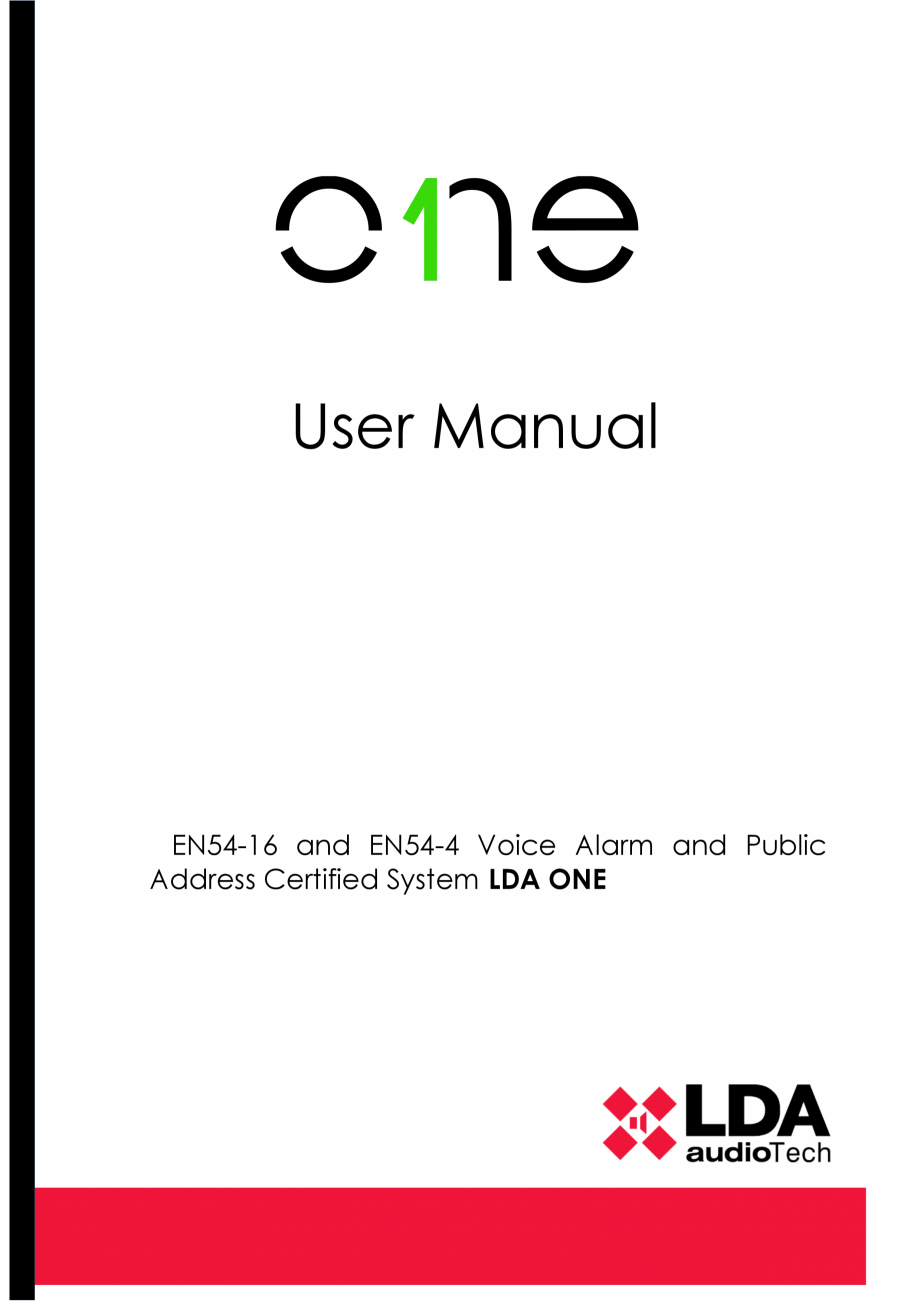Manualul utilizatorului - Unitate centrala sistem de evacuare si adresare publica compact EN54-16 LDA Audio Tech ONE-500
Tip documentatie: Instructiuni montaj, utilizare
Salvează pdf
Full screen
the \DATAxx
folder. If there is a previous configuration, it overwrites the previous data.
• Import Sys CFG: It imports the data from folder DATAxx from the USB memory.
3.3.9 System. System configuration
System general parameters configuration:
• Info: Shows system information, FW version, serial number...
• AutoSetup: Launches the automatic system configuration by EN54. See details at
section 3.2 Automatic Configuration. Autoset.
• Software Reset. Restarts the system and internal processors.
• Factory Reset: Returns the system to its Factory configuration. It deletes all the
parameters configured by the user, except for the logs.
• FW_Update: Allows to actualize firmware version by a file in USB memory.
◦ NOTE: File must be in the root directory and be called fw.bin or update.bin
• Erase Logs: Mades a failure and emergency logs erase.
• Logs Interval: It allows to configure the time of permanence of the entries of the
logs. You can choose the days of permanence or s
... ascunde
Alte documentatii ale aceleasi game Vezi toate
Fisa tehnica
2 p | EN
NEO 8060 PA/VA
Instructiuni montaj, utilizare
56 p | EN
NEO 4250-E






































